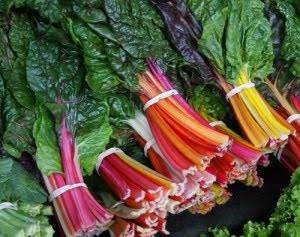
Factoid: squash was such an important part of the diet of the Native Americans that they buried it along with the dead to provide them nourishment on their final journey.
As we begin to enter into the late fall and winter harvests, there is a wealth of nourishment offered from the mildly sweet flavored and finely textured winter squashes. This includes varieties such as acorn, butternut, buttercup, turban squash and pumpkin. While these squashes become available starting in August, they are at their best during October and November.
Winter squash, members of the Cucurbitaceae family and relatives of both the melon and the cucumber, come in many different varieties. While each type varies in shape, color, size and flavor, they all have hard protective skins that are difficult to pierce that gives them a long storage life of up to six months and a hollow inner seed containing cavity.
A good source of nourishment that is very low in Saturated Fat, Cholesterol and Sodium. It is also a good source of Vitamin E (Alpha Tocopherol), Thiamin, Niacin, Vitamin B6, Folate, Calcium and Magnesium, and a very good source of Vitamin A, Vitamin C, Potassium and Manganese
The recipe below offers a base recipe for traditional creamy butternut squash soup with three flavorful variations. All make use of commonly available ingredients and are easy to make. This is a great keeper of a recipe since with a few minor tweaks you got a recipe for a different cuisine set.
Classic ButterNut Squash Soup
Base Recipe Ingredients
- 4 to 6 cups chicken stock
- 4 cups cubed butternut squash
- 2/3 cup diced carrot
- 2/3 cup diced onion
- 1/2 cup diced celery
- 2 tbsp olive oil
- 1/2 tsp fresh thyme - chopped
- Sea salt and fresh ground black pepper - to taste
Process:
Heat olive oil in a large soup pot
Add carrot, celery and onion
Cook until vegetables have begun to soften and onion turns translucent (about 3 to 4 mins)
Add butternut squash and thyme - stir to combine with vegetables
Stir in chicken broth and season with salt and pepper
Bring to a boil, reduce heat and simmer until squash is fork-tender (about 30 mins)
Using an immersion blender to puree soup or alternatively, let the soup cool slightly and carefully puree in batches in a traditional blender
Variation: Apple, Gorgonzola and Almond
Follow recipe above and stir a cup of applesauce into pureed soup. Garnish each serving with a tablespoon crumbled Rogue Creamery Gorgonzola, a tablespoon of toasted whole almonds, a few slices of thinly sliced apple and a small sprig of fresh thyme.
Variation: Thai Style
Stir a tablespoon red curry paste and 2 teaspoons chopped fresh ginger into carrot, celery and onion mixture. Cook until vegetables are tender and ginger is aromatic. Add squash, cook until tender, then add broth and 1/2-cup light or regular coconut milk. Season with salt and pepper. Puree soup and garnish each serving with 1 or 2 pappadums, a tablespoon toasted coconut flakes and a tablespoon chopped fresh cilantro. NOTE: Pappadums are available on the snack food aisle.
Variation: Southwestern Style
Add a tablespoon chopped chipotles in adobo** to carrot, celery and onion mixture. Cook until vegetables are tender. Add squash, cook until tender, then add broth. Season with salt and pepper. Puree soup and garnish each serving with 2 tablespoons crumbled queso fresco, a tablespoon cumin-toasted pumpkin seeds and a tablespoon chopped fresh cilantro.
** Canned chipotles in adobo sauce are available on the Mexican food aisle of your local grocer. Freeze any unused chipotles with sauce for future use.
 Mustard greens are related to kale, cabbage, and collard greens. They are the peppery leafy greens of the mustard plant. They are often less bitter than kale or collard greens, and more peppery, like arugula.
Mustard greens are related to kale, cabbage, and collard greens. They are the peppery leafy greens of the mustard plant. They are often less bitter than kale or collard greens, and more peppery, like arugula.
























